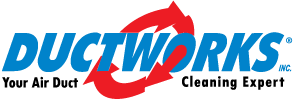What Does the EPA say about Indoor Air Quality?
The US Environmental Protection Agency states that poor indoor air quality is one of the top five environmental threats to our country. So why does the EPA feel so strongly about indoor air in homes and workplaces? Well, according to the EPA, indoor air is on average a staggering three to five times more contaminated than outdoor air and in some instances as high as seventy times.
So why is indoor air so much worse in our home than outdoor air?
The answer is in modern day construction practices. Homes are being built more air tight in an effort to be more energy efficient and environmentally conscious. Older homes are being re-insulated and getting air tight window upgrades. The result is less drafty homes that no longer have natural ventilation to bring in fresh air.
Normal everyday living provides an ongoing source of airborne contaminants like dust, dander, chemicals and other allergens. These pollutants become trapped in your home due to this poor ventilation and then are re-circulated by your heating and cooling system.
So what does this mean for you?
The average American family now spends ninety percent of their time indoors. That means that the bulk of our days is spent breathing in these irritants and pollutants and the health effects are significant. Dust, pollen, household chemicals and smoke can create an unhealthy situation in your home for everyone, but especially for people with compromised respiratory systems such as children, the elderly, and people with asthma and allergy sufferers.
So what can you as a homeowner do to improve your air quality?
Today doctors agree that one of the healthiest things to do is to minimize your exposure to these indoor pollutants, allergens and irritants in your home. One of the most logical places to address indoor pollutants is in your heating and cooling system. Think of this system as the lungs of your home. It takes in air and breathes it out; it circulates all the air and everything in the air throughout your home. In fact, on average all the air in your home passes through your heating and cooling system five to seven times each day.
Begin by making sure that you regularly change furnace filter. While these filters do not eliminate airborne contaminants they can help reduce pollutants from entering your furnace and circulating through the house. Most experts recommend replacing your filter every two months.
Another important step to take to improve the quality of the air in your home, and one that many overlook is having your heating and cooling system thoroughly cleaned. As polluted air is re-circulated through your heating and cooling system dust, dirt, and contaminants are deposited throughout the system overtime. These subtle particles are then picked up by the airstream and are then pushed back out into the living areas of the house to be breathed in by family members. In a large number of homes the heating and cooling system has never been cleaned. Even in newer homes or homes undergoing renovation contaminants such as sawdust and drywall dust left over from construction process are deposited in your ducts.
So how clean is the heating and cooling system in your home? Here is a quick way to check. Remove a vent cover and use a mirror and flashlight to look inside. Or use a small digital camera to take a picture of the inside of your duct. If your ducts are dirty it is time to have your air ducts cleaned.
Choose a NADCA Certified Company
All NADCA members must meet a strict set of requirements:
- Comply with NADCA’s International cleaning standards
- Comply with NADCA’s code of ethics.
- Comply with NADCA’s general liability insurance requirements
- Maintain at least one certified Air System Cleaning Specialist (ASCS) on staff at all times
The Air Systems Cleaning Specialists Certification verifies that they have successfully completed rigorous testing on heating and cooling system components and cleaning techniques.
Giving your homes heating and cooling system a little attention will keep it and the air in your home cleaner and healthier for you and your family.

